If you don’t know how to read your eyeglass or contact lens prescription, you are not alone. What do the numbers and abbreviations mean? And how do you know what kind of glasses you need? Northeast Ohio Eye Surgeons understand that your prescriptions can be confusing, and that’s why we’re here to help.
We’ll explain different parts of your prescriptions so you can better understand your eyesight. Keep reading to better understand what your prescription means in terms of how you see!
Eye Prescription Abbreviations and Terminology
Prescriptions consist of abbreviations and terminology that can be difficult to understand. Below is a quick list of abbreviations that you might see on your glasses or contact lens prescription and a description of what it all means.
OD stands for “oculus dexter.” This is a Latin term that means your right eye.
OS stands for “oculus sinister.” This is another Latin term that means your left eye.
OU stands for “oculus uterque.” This means both eyes in Latin.
Near vision. This is vision that’s limited to seeing things close up.
Distance vision. This is vision that’s limited to seeing things far away.
SPH. SPH stands for “sphere.” Sphere indicates the correction for nearsightedness or farsightedness.
CYL. CYL stands for “cylinder” and is only applicable to those with astigmatism. Patients with astigmatism need cylindrical correction in addition to the spherical component because their eyes are more oblong shaped than spherical.
AXIS. AXIS is a number from 1 to 180 that determines the orientation of your astigmatism correction. AXIS is measured in degrees.
ADD. ADD refers to additional magnification. This entails reserving the lower section of your glasses for added magnification capabilities when one reaches presbyopia age, typically after 40. This is the power in the bifocal, trifocal or progression addition to your glasses.
Prism. Prism is another feature that can be ground into the lenses of your glasses. The addition of a prism to your lenses helps those whose eyes don’t move in alignment with each other and is used to correct double vision.
Positive Numbers. Positive numbers are seen as a plus sign in front of the sphere. They indicate diopters that will correct farsightedness or hyperopia.
Negative Numbers. Negative numbers are seen as a minus sign in front of the sphere. These indicate nearsightedness, also known as myopia.
Eye Prescriptions
Now that you have a basic understanding of prescription abbreviations, we can now break down the different types of eyeglass prescriptions.
Farsighted prescriptions. A prescription for farsighted individuals. Farsighted means that a patient can see far and tends to have more difficulty upclose when they are not wearing glasses. These prescriptions feature a number with a plus symbol in the “sphere” box and the lenses are shaped to correct near vision.
Nearsighted prescriptions. A prescription for nearsighted individuals. Nearsighted means that a patient can see near and tends to have more difficulty far away when they are not wearing glasses. These prescriptions feature a number with a minus symbol in the “sphere” box” and the lenses are shaped to correct distance vision.
Astigmatism prescriptions. Individuals with astigmatism will have a number in the “cylinder” column of their prescription that indicates the needed lens power to correct their astigmatism. There will also be a number in the “AXIS” column needed for astigmatism correction orientation. The CYL number can actually be presented in either plus or minus numbers depending on the type of equipment the office uses to check the prescription.. At Northeast Ohio Eye Surgeons, we use CYL. .
Bifocal prescriptions. These prescriptions will include an ADD value. This value indicates the required strength for the near or reading prescription in your lens.
Prism Correction prescriptions. For individuals who require correction for their eye misalignment issues/double vision, eyeglass prescriptions will have a prism value. These values indicate the amount and direction of prism needed to move the image in the glasses to the misalignment of the eyes.
Contact Lens Prescriptions
Contact lens prescriptions and eyeglass prescriptions often differ from each other due to their positioning in relation to the front of the eye. Contact lenses sit directly on the eye and provide more peripheral vision whereas eyeglasses sit away from the eye in a flat plane. Contact lenses can also come with fixed parameters from the manufacturer and might need to be adjusted by your optometrist to properly fit.
These are the two necessary measurements found on contact lens prescriptions:
BC. “BC” refers to the base curve of the contact lens. The curvature of the lens molds comfortably to the shape of your eye and is measured in millimeters. The number measurement typically falls between 8 and 10 millimeters.
DIA. “DIA” refers to the diameter (width) of the contact lens. Most contact lenses fall between 13 and 15 millimeters wide.
Visual Acuity Chart
Here is an example of a Visual Acuity Chart, what you’ll see during your eye exam to determine your eye prescription:
Eye Prescription Chart
Here’s an example of what an eye prescription chart looks like:
How Often Does an Eyeglass or Contact Lens Prescription Change?
The most rapid time of change in one’s prescription is when they are growing, most commonly 8-21 years of age. After that, it is less common for the prescription to have big changes. Small and gradual changes are common due to aging and aging of the eyes. Your prescription for your near vision tends to change as you get older (40+) when people develop presbyopia.
How Often Should You Get an Eye Exam?
You should be getting your eyes checked annually. An annual eye exam is crucial in monitoring your eye health and updating your eye prescription when it’s needed. Request an eye exam today at a center near you!
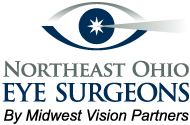

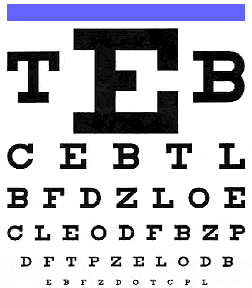



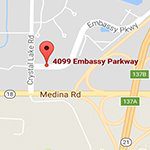
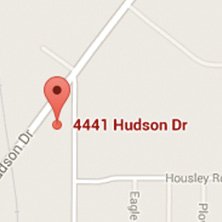
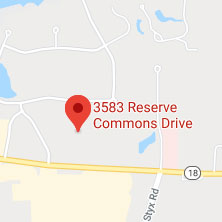




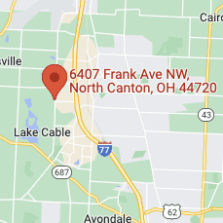


Recent Comments